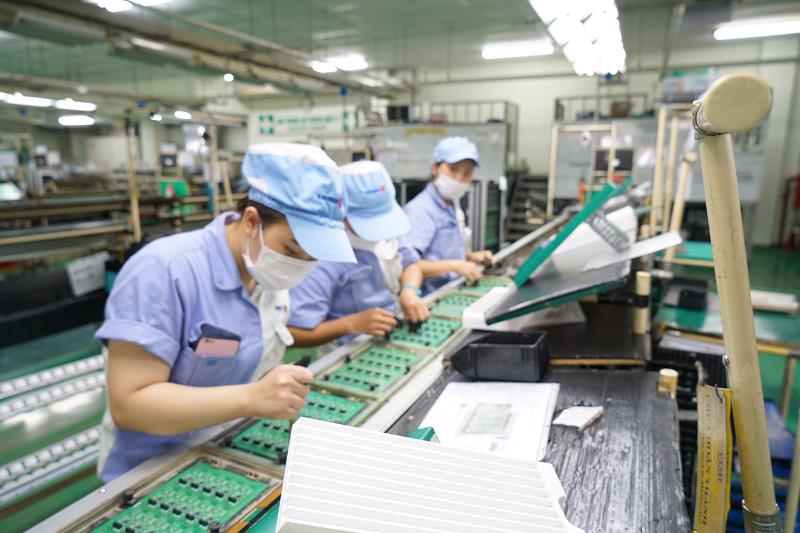
Vietnam aims to become a modern industrialized country and join the group of the world’s top 15 exporters by 2030.
| Electronics production at Katolec Vietnam in Quang Minh Industrial Park, Hanoi. Photo: Pham Hung |
The move was revealed in the Ministry of Industry and Trade (MoIT)’s draft proposal for restructuring the trade and industry sector for the 2021-2030 period.
In line with such a move, the MoIT expected Vietnam to have at least 20 products and goods capable of competing on the international market, in turn helping the country to further integrate into global value chains.
The plan also called for the local supporting industries to meet 70% of domestic demand and lift the localization rate in industrial sectors to above 45%.
The MoIT admitted the lack of development of the supporting industries. In this context, manufacturing and processing sectors remain largely dependent on imported input materials, especially in key manufacturing sectors, such as electronics, garment, footwear, leather, and automobile.
“This was the main reason that the domestic industrial sectors faced a lot of hardship when the Covid-19 outbreak emerged in Vietnam’s major suppliers of industrial parts and accessories, namely China, South Korea, or Japan,” the ministry said, noting only when those countries put the pandemic under control, then the supply source for Vietnam’s industrial production was recovered.
Nevertheless, the country’s efforts to restructure the industry in the 2011-2020 period achieved significant results and further cemented its role as the driving force for economic growth.
As of present, the trade and industry sector contributed 42% of the GDP, in which industrial activities accounted for 27.54%, domestic trade 11.66%, and foreign trade 2.5%.
The MoIT identified the improvement of labor productivity as a key priority for the sector in the coming time as it remains at a modest level compared to regional countries, and accelerates industrialization.
“So far, the industrial sector’s role in the global value chain has been limited to an assembling hub for exports with low added value,” it noted, referring to the fact that 90% of input materials are imported.
For the 2021-2030 period, the MoIT targets the industrial sector to make up 40% of the GDP by 2030, in which the proportion of manufacturing and processing would increase to 30%; the value-added in the sector would reach US$2,000 per capita; the rate of hi-tech production value in manufacturing/processing would be at above 45%.
In line with these objectives, Vietnam targets an average expansion rate of the industrial sector of 8.5% per annum, including a 10% rate of manufacturing and processing, and average labor productivity of 7.5%.
The MoIT also stressed the importance of accelerating the restructuring of the state sector via the privatization of state-owned enterprises and addressing weak and loss-making projects under its administration.






- Vietnam's textile industry braces for tougher competition in 2025
- Vietnam needs 2,400 professionals to operate Ninh Thuan nuclear power projects
- Vietnam's 2025 digital economy to thrive on AI-powered solutions
- Recruitment trend for 2025 with AI integration
- Hanoi set 169,000 new job creation targets for 2025
- Hanoi releases plan for sustainable production and consumption

